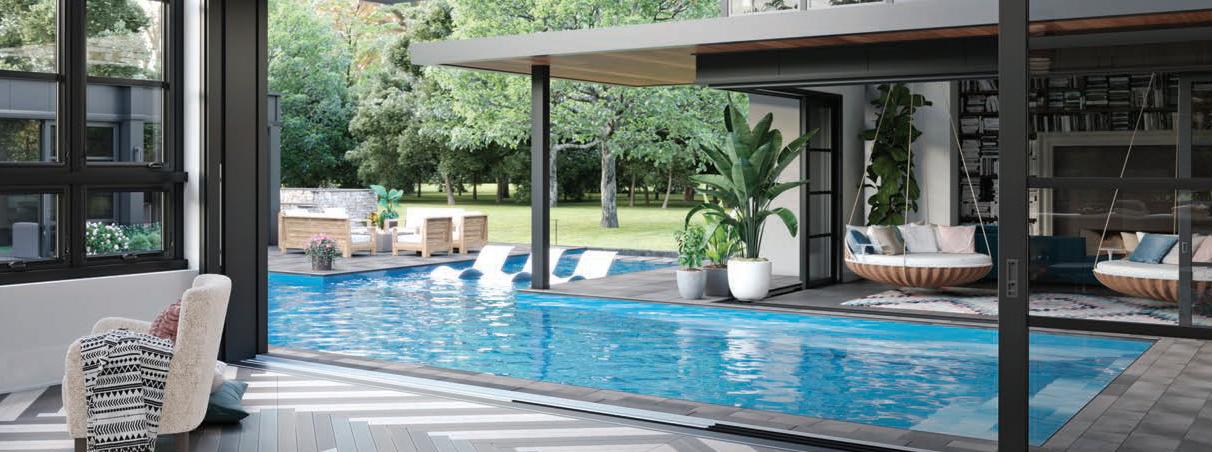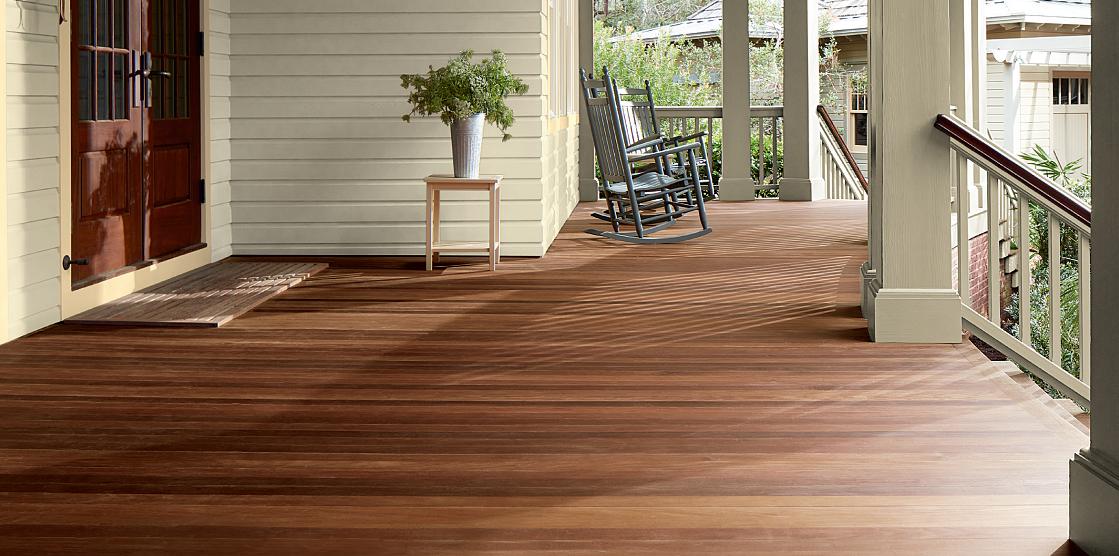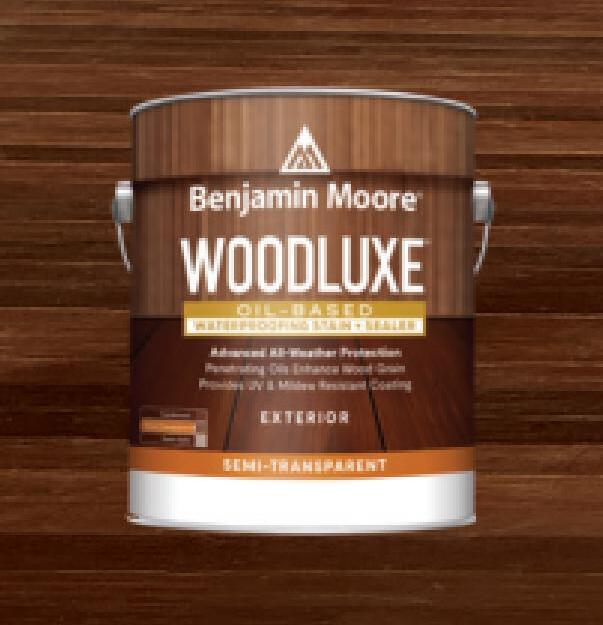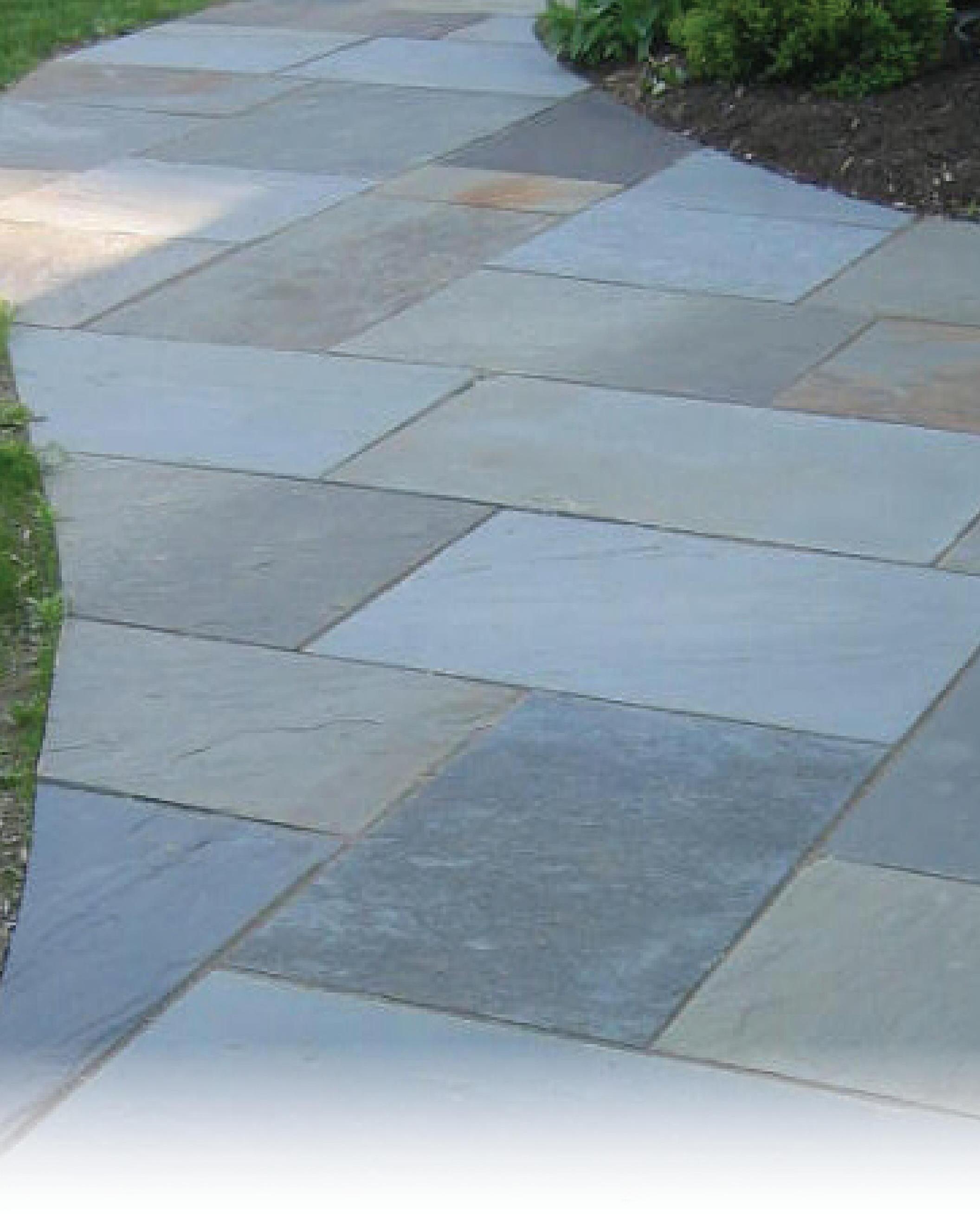





























































ASpecialAdvertisingPublicationof Saturday,April20,2024









A kitchen is often the most utilized room in a house. Meals may be prepared, cooked and often eaten in kitchens, and the room is often utilized as a homework spot or a makeshift place to pay bills and stay on top of household needs. By enhancing the organization and functionality of the kitchen, homeowners can enjoy these popular spaces even more.
Homeowners have increased their spending on home improvements in recent years. According to the Joint Center for Housing Centers for Harvard University, project spending rose to $472 billion in 2022 from $328 billion in 2019. It’s estimated consumers will have spent $485 billion by the end of 2023. Kitchen renovations were the most popular upgrade and accounted for the highest budgets in 2021, according to Houzz. When the time comes to renovate a kitchen, homeowners can take steps to make these spaces more organized and therefore functional. Here are eight tips to creating a more functional kitchen.
1. Increase storage, and then invest in more. Make the most of corner cabinets and other potential dead spots in a kitchen. Various products can be used to organize awkwardly angled or shaped areas. Kitchen designers also can work with you to reconfigure cabinets and kitchen layouts.
2. Organize utensils and dishes around the sink/dishwasher. Rather than traversing the kitchen to put clean dishes away, make loading and unloading the dishwasher
that much easier by locating commonly used items next to and above it. Similarly, place frequently used saucepans, baking dishes and other items near the oven or food preparation area.
3. Utilize drawer and cabinet organizers. Make a place for everything in the kitchen. Take out all items and see what you need and use all the time. Then coordinate storage around those items so everything fits perfectly. Pull-out shelves and Lazy Susans also can facilitate access.
4. Add shelves to cabinets. If you can afford to have a custom-built kitchen, by all means design cabinets according to preference. If you’re using standard cabinets, you may have to reconfigure shelves and spacing to fit the items you have. This also will help you maximize cabinet space.
5. Organize the garbage. Have a pull-out drawer or cabinet to store trash bins. Separate compost, trash and recycling needs.
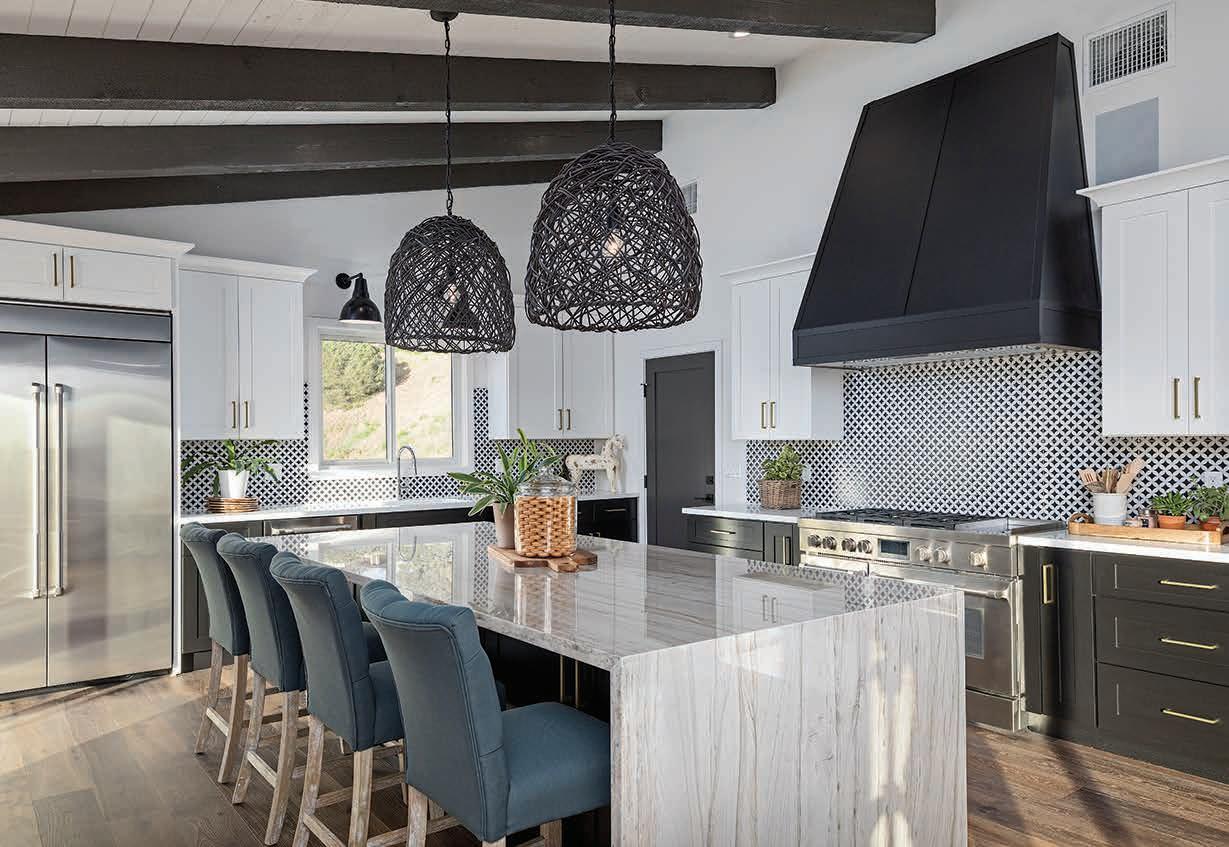
6. Create continuity in the room. Many open concept homes will have kitchens open up to another room in the home. Mirror the design scheme from elsewhere in the house, and make sure that the flow between spaces is not obstructed.
7. Create a beverage station. A beverage station can minimize the time needed to make a cup of tea or coffee or for the kids
to grab juice or chocolate milk.
8. Have a workspace in the kitchen. Whether paying bills, making a grocery list or leaving notes for the family, a dedicated workspace can add more function to the room. Be sure
there is task lighting nearby and ample overhead lighting to ensure that all kitchen needs are illuminated properly.
A more functional kitchen can make this already popular space even more so.




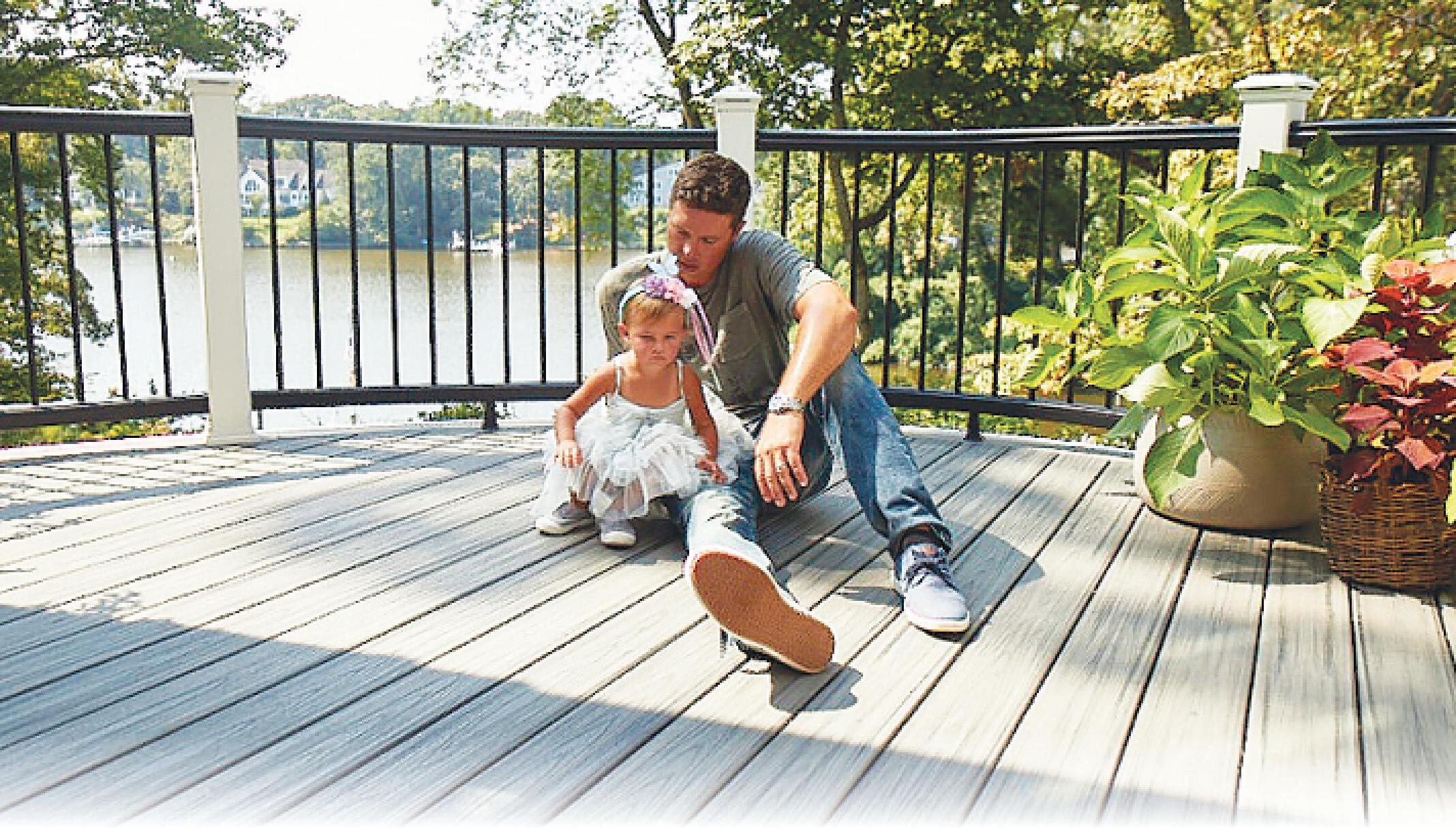
Gardening is a rewarding hobby that pays a host of significant dividends. Many people love gardening because it allows them to spend time outdoors, and that simple pleasure is indeed a notable benefit of working in a garden. But the National Initiative for Consumer Horticulture notes that gardening provides a host of additional benefits, including helping people get sufficient levels of exercise, reduce stress and improve mood. With so much to gain from gardening, it’s no wonder people look forward to getting their hands dirty in the garden each spring. As the weather warms up, consider these tips to help bring a garden back to life.
• Discard the dead weight. Winter can take its toll on a garden, even in regions where the weather between December and early spring is not especially harsh. Discard dead plants that have lingered into spring and prune any perennials that need it. Branches that fell during winter storms also should be removed at this point if they have not previously been discarded.
• Test the soil. Soil testing kits can be purchased at local garden centers and home improvement retailers. Such tests are inexpensive and can reveal if the soil needs to be amended to help plants thrive in the months to come.
• Mulch garden beds. Mulching benefits a garden by helping soil retain moisture and preventing the growth of weeds. Various garden experts note that mulching in spring can prevent weed seeds from germinating over the course of spring and summer. That means plants won’t have to fight with weeds for water when the temperature warms up. It also means gardeners won’t have to spend time pulling weeds this summer.
• Inspect your irrigation system. Homeowners with in-ground irrigation systems or above-ground systems that utilize a drip or soaker function can inspect the systems before plants begin to bloom. Damaged sprinkler heads or torn lines can deprive plants of water they will need to bloom and ultimately thrive once the weather warms up.




• Tune up your tools. Gardening tools have likely been sitting around gathering dust since fall. Serious gardeners know that tools can be expensive, so it pays to protect that investment by maintaining the tools.
Sharpened pruners help make plants less vulnerable to infestation and infection. Well-maintained tools like shovels and hoes also make more demanding gardening jobs a little bit easier, so don’t forget to tune up your
tools before the weather warms up.
It’s almost gardening season, which means gardeners can start on the necessary prep work to ensure their gardens grow in strong and beautiful this spring.




It can be bittersweet when adult children decide the time has come to move out of the family home. Parents perhaps get their first trial run of this scenario when their children go off to college or enlist in the military. Rooms are left empty, if only for a certain period of time. Eventually, those rooms will remain empty as adult children move out of the house for good.
Converting a child’s bedroom into an area for adults may take some planning. It can be exciting to regain space, but at the same time, it can be disheartening to convert a child’s bedroom once and for all. When the time comes and homeowners are emotionally ready to tackle bedroom conversions, the following tips and suggestions can help the process go smoothly.
Give a childhood bedroom an adult spin without changing too much. If furniture is in good shape, replace the bedding, change the flooring, swap out artwork, and remove “youthful” items like toys, trophies and other
collectibles. When the child comes home to visit, he or she will still feel comfortable in the space.
CREATE EXTRA STORAGE
The bedroom can be transformed into a large walk-in closet or dressing space. According to the design experts at Houzz, many of their clients request this type of dressing room situation. There’s a bonus if the layout allows the space to connect to the owner’s suite or bathroom. This is a major overhaul, so homeowners should consider enlisting a professional contractor.
MAKE A FITNESS CENTER
A spare bedroom can be turned into a home gym to make the act of working out more convenient. Homeowners should take inventory of any exercise equipment they may have and then figure out where existing and new equipment will go. They may need to consult a structural engineer to ensure that the flooring can bear the weight of additional equipment.
CREATE A WORK SPACE
One of the best ways to transform adult children’s

Make every day
Socialization is a very important part of your dog’s development – it helps build the foundation for a balanced, well-behaved dog while fulfilling his evolutionary need to be part of a pack. Paula has 40+ yrs experience in dog behavior You want to choose a dog daycare that provides your pet with a safe, positive and structured experience.
Monday - Friday 7:00am-5:00pm
10 Lyman Street, Ste 10, Pittsfield, MA shamrockdoggrooming.com/black-jack-dog-day-care
bedrooms is to convert the spaces into home offices. Those who have been setting up “desks” at dining room tables or elsewhere may be excited about the prospects of finally having a private, dedicated space to work from home.
TURN IT INTO A CRAFT ROOM
The bedroom can be converted into a space to explore hobbies and various other interests. A dedicated craft space, a reading nook, a place to store photography equipment, or another function can serve as a useful way to repurpose an empty bedroom.


Contractors perform important work for millions of homeowners every day. Home improvement projects are complicated undertakings, and the experience of skilled contractors can ensure jobs are completed on time and within homeowners’ budgets. Homeowners have undoubtedly heard horror stories from neighbors about projects that have gone awry. Projects can go sideways for a number of reasons, but a skilled contractor can help homeowners navigate such situations successfully. That underscores how important it can be to find the right professional for the job. The following are some tips homeowners can consider as they look to hire a contractor.
• Identify which professional you need. Some contractors are of the jack-ofall-trades variety, but many specialize in a particular line of work. It’s important that homeowners identify which type of contractor they should work with prior to starting a project. This requires homeowners to define the goal of the project (i.e., new wood floor installation),
which can serve as a springboard into finding the right type of contractor.
• Prioritize building safety. Safety should be the utmost priority for homeowners and contractors alike. Prior to hiring a contractor, homeowners should identify any safety restrictions that might be enforced by local governments and take note of all the permits necessary to get a job done. Homeowners can then discuss those restrictions and permits as they interview contractors. Projects that do not adhere to code are illegal and can compromise homeowners’ ability to sell their homes in the future. So it’s vital to work with contractors who are familiar with local codes and aware of which permits are necessary to ensure a project can go forward.
• Insist on written estimates. Handshake agreements offer no protection to homeowners or contractors, so estimates indicating what will be done and how much the project will cost should be provided. Homeowners should insist on receiving written estimates and inter-

pret an unwillingness to provide one as a significant red flag.
• Know your rights. Laws vary by region, but in general homeowners have a right to a written contract and contractors are obligated to provide a copy of that contract signed by both parties. That contract must be provided prior to the start of the project. The contract should provide a detailed account of
the work that will be done, as well as a timeline indicating important dates that components of the project will begin and be completed. The contract also should detail materials and who is providing them. Details regarding payments, guarantees and warranties also should be cited.
• Do not pay in cash. Some contractors may suggest that the project will cost
less if they’re paid in cash. However, home improvements should never be cash transactions. Cash does not indicate proof of payment, which can be problematic if a dispute arises.
Contractors help homeowners turn dream projects into reality. Homeowners can employ various strategies to ensure they find the right professional for their home improvement project.









Beauty is in the eye of the beholder, and that notion is as true when renovating a home as it is when studying a piece of art. Therefore, when homeowners are looking for the best building materials for their home remodels — including backyard decks — their own personal preferences may ultimately dictate the direction they go.
Deck boards and railings can be made from a diverse array of materials, including traditional hardwood, plastic and composite materials. Here is a deep look into some of the more popular decking materials so homeowners can make informed decisions when contracting with a decking professional for the build.
In the not-so-distant past, decks were primarily built using some type of wood. Wood is widely available and fairly cost-effective. However, as anyone with a wood deck knows, wood requires frequent upkeep and it can be susceptible to rotting or insect damage. Wood decks also may splinter and deteriorate when exposed to the elements or pool water. Pressure-treated boards are infused with chemicals to help them endure, but that does not make them impervious to wear. Still, the traditional look of a wood deck remains appealing to many homeowners.
Composite decking materials are made from a blend of recycled plastic and wood fibers. Since there is so much recycled content, composite
decks attract those who are concerned about the environment and sustainability. Composite decking comes in uncapped and capped varieties. The capped version has an extra layer of protective capping made from highperformance polymers, says TimberTech, a decking and outdoor furniture provider. While composite decks may have similar up-front costs to wood, they will require less maintenance over the years, but they must be scrubbed to avoid mildew growth.
Decks made of polyvinyl chloride, polypropylene or high density polyethylene (HDPE) are collectively referred to as PVC decks. They are made entirely from environmentally safe plastic with no wood in the mix at all. PVC decks are more durable than composite and can last a lifetime. All PVC decks need is occasional cleaning. A potential disadvantage to PVC is it doesn’t always look, sound or feel like wood. Also, complex fastening systems can make the boards move as the tem-
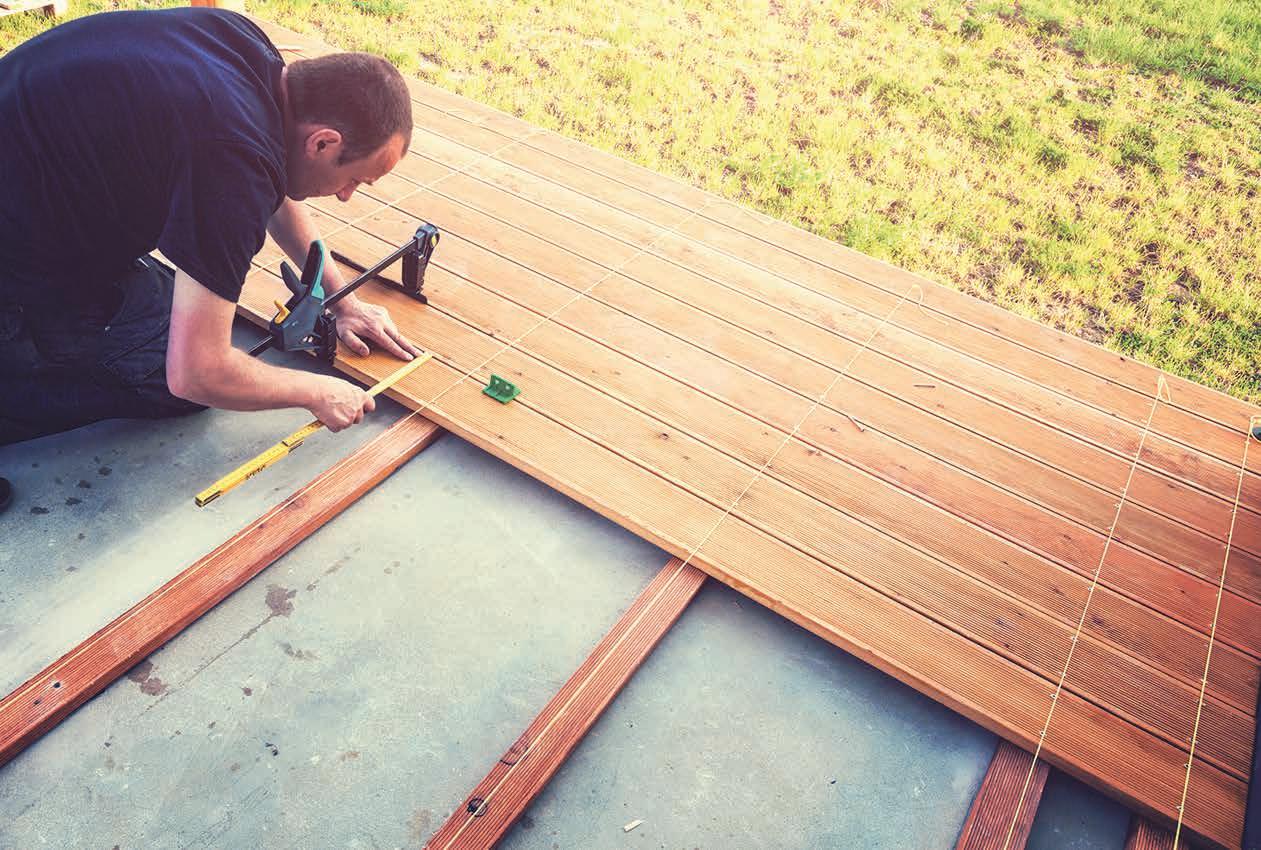
perature changes, resulting in squeaking as people walk on the deck. Generally, PVC is more expensive than wood or composite, but that investment may be worth it for those who never want to worry about deck repair or replacement.
This Old House says there is another plastic decking material made from polystyrene. It is stiff, strong and light, and with the brand Eon, the nonslip




surface becomes less slippery when wet so it may be great around pools.
Aluminum may not be as popular as other decking materials, but it is lighter and stronger than wood, composite, and plastic. Aluminum also is resistant to mold, weather and insects, and it can be recycled. An aluminum deck will last for years, which is why it is one
of the more costly decking materials.
Homeowners have many choices when picking materials for their decks. If they want a traditional look and moderate cost, wood may be the way to go. Those concerned about looks and durability may like composite. People who want very durable and long-lasting may want to give strong consideration to plastic or aluminum materials.

Solar energy panels have gained visibility in neighborhoods across the country. Where it once was a rarity to see solar panels on the roofs of homes, today a stroll or drive around a given community is bound to reveal a number of homeowners have made the transition to solar power. You may be wondering if the investment is worth it.
Solar panels harvest energy from the sun through the use of photovoltaic cells. These semiconductor materials absorb photons from the sun, and the photons release electrons from the atoms of the semiconductor material. According to Forbes, the flow of these electrons within the cell creates an electric current directed to circuits. Solar panels can be placed anywhere there is abundant sunlight, such as in open fields. In residential areas, they’re most often placed
on roofs to get the most sun exposure.
Although having solar panels on the roof may affect the aesthetic of a home, many people find the benefits far outweigh such issues. Consider these perks to going solar.
• Save money: One of the draws of solar power is the ability to save money on your monthly utility bill. Electricity costs seemingly rise year after year. The Solar Energy Industries Association® says the cost of solar has decreased by more than 70 percent in the past decade compared to the cost of electricity, which has risen about five percent. Over the course of a solar panel life span, which is typically between 25 and 30 years, it’s possible to save $25,500 to $33,000 on electricity.
• More affordable: As noted, the cost of installing solar panels continues
to drop. Investopedia says up-front cost of a residential solar power system is between $3,500 and $16,000, depending on the size of the system. Energy.gov says the United States has extended the federal residential solar tax credit, and you can save a 30 percent tax credit on the cost of solar systems through January 1, 2033. Options abound for financing to make solar more affordable.
• Increased home value: According to the National Renewable Energy Laboratory, homeowners can increase the value of their homes by $20 for every $1 in savings on electrical bills from solar energy. Homes with solar panels sell 4 percent higher than those that don’t have them.
• Get paid back: Solar incentives in some areas may enable homeowners to turn profits in addition to generating electric bill savings.
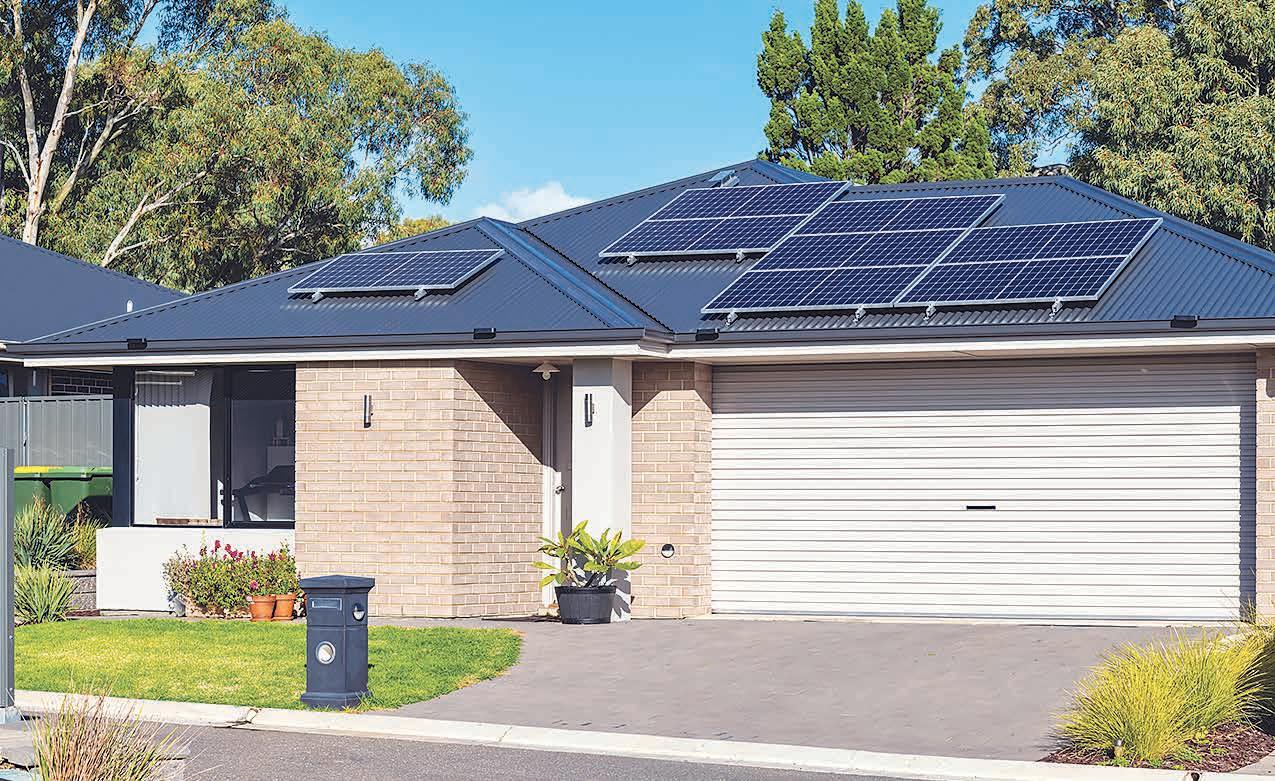
Solar renewable energy credits compensate you for the electricity that the solar panel system generates.
• Avoid disruptions in power: Strong storms or even accidents that affect power lines can knock out traditional electricity for hours. Battery storage combined with solar energy can be beneficial during a disruption in power, and eliminate the need to purchase a backup generator.
• Protect the planet: Burning of fossil fuels to generate power contributes to carbon emissions. Switching to solar can reduce carbon emissions and help prevent air and water contamination.
Solar energy panels are becoming more visible in residential neighborhoods thanks in large parts to the many benefits such panels provide.


Windows are a major component of a home. Window installation professionals will tell homeowners that the average life span of residential windows is between 15 and 30 years. Most well-maintained products can last 20 years, so homeowners who have windows approaching that age may want to schedule a window assessment and possible replacement.
Replacing windows is a job that requires advanced skill, and this is not a do-it-yourself project. There are many qualified professional window installation companies that will work with homeowners to measure, order and install windows that will fit with the style of a home and local weather, all while providing features the homeowner desires. For those wondering when to replace windows, Pella and Renewal by Andersen, two of the premiere window manufacturers, offer these guidelines.
• Difficulty opening and closing windows. A window that does not operate as it should can aggravate homeowners. If windows are sticking shut or cannot be securely closed, it’s probably time for something new.
• There’s apparent window damage. Accidents happen, and if a rock is kicked up from a lawnmower and cracks a window or if spring baseball practice has gone awry with an errant throw, windows may require replacement.
• Drafts in the window are common. If heating and cooling systems are working overtime, drafty, poorly insulated windows could be to blame. Various agencies can perform energy efficiency tests in a home. Windows that are determined to be the weak spots should be replaced.
• Dated windows are present in the home. Older windows may pose safety hazards, especially those in older homes. A larger window may be needed to comply with fire safety codes allowing for window egress. Dated windows also may simply look “old” and compromise the aesthetics of a home.
• Outdoor noises are noticed quite readily. Newer windows can help reduce noise transmission. So those leaf blowers, airplanes, barking dogs, and kids play-

ing basketball up the street won’t disturb homeowners as they try to enjoy some peace and quiet indoors.
• Fading indoors is noted. Windows that do not feature low-emissivity (Low-E) glass coatings will not block UV rays. Those rays can cause fading to wood floors and furniture or pretty much anything the sunlight touches. Replacing existing windows with Low-E coating alternatives can safeguard belongings and improve window efficiency.
Window replacement may be necessary when existing windows are showing signs of aging or damage.


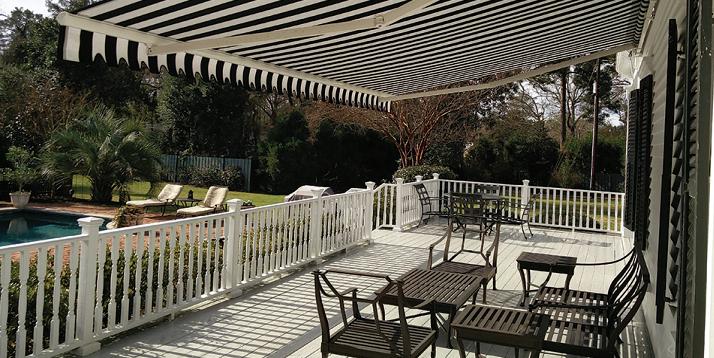


Who doesn’t have a space that serves as a catch-all for items that seemingly have no other home? For many, this storage wasteland where items go to be forgotten tends to be the garage. Before long, clutter can overwhelm the space and create an eyesore. Garage clutter also makes the space less functional by making it harder to park a vehicle or store equipment.
Organizing a garage takes work, but the end result can improve the appearance, free up space, make work more efficient and make it easier to find and use tools more readily. Here are some ways to get started on organizing your garage.
One of the first steps when organizing a garage is to thoroughly analyze what is needed and what can be removed from the garage. If items belong elsewhere, such as in a shed or the basement, move these items first. Discard damaged or broken items. Next, move on to tools or gear that hasn’t
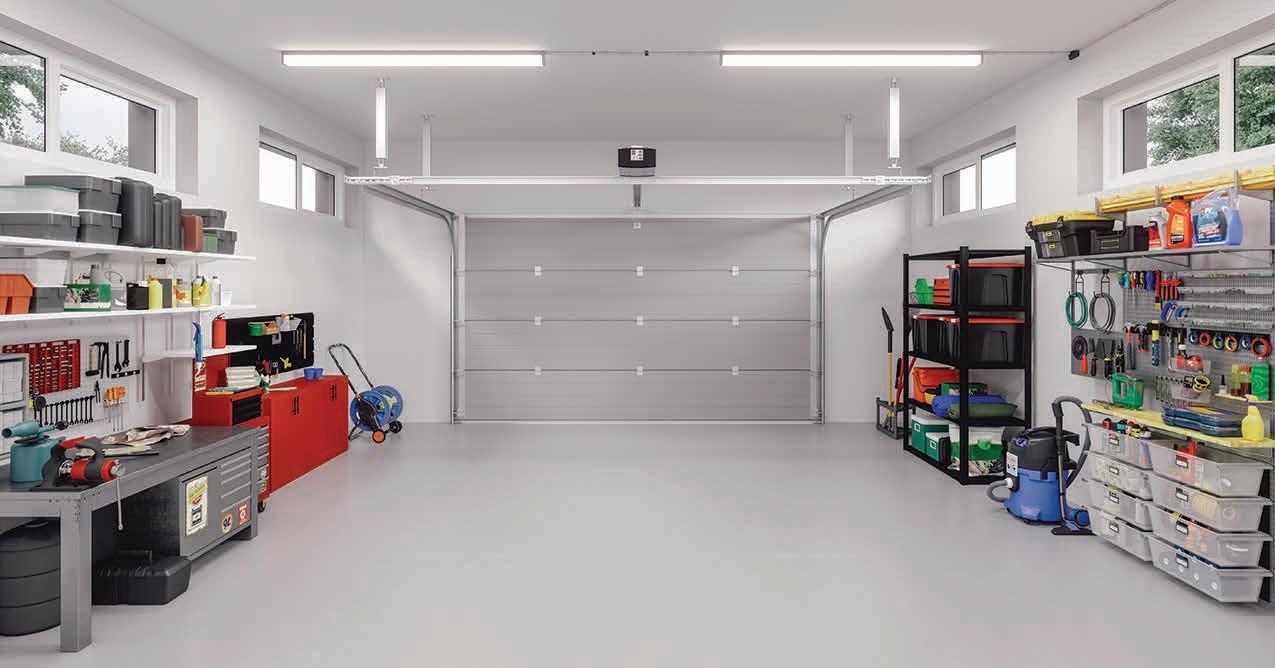
been used in some time. Will you use it again? If the item has been collecting dust for years, you likely already know the answer to that question.
Pile all of the items in the driveway so you have a clean slate with which to start. Measure the room to figure out the exact dimensions so you’ll know how much wall space is available for storage.



The ultimate goal of a garage storage renovation is to make floor space available. Lifting items off the floor makes access easier and protects items should there be a flood or leaks.
A combination of wall shelves, overhead shelves, cabinets and wall hooks can help homeowners create more floor area. Organization becomes easier

when everything has a designated space where it can be easily returned to.
When investing in shelving and racks, remember that many of the items stored in garages tend to be heavy. It’s important to ensure that shelves and hooks are heavy-duty and able to withstand the weight of pressure put on them. Verify the maximum
weight so that racks will not buckle or tip over and cause issues.
Overhead storage can be reserved for items that aren’t used frequently, such as seasonal decorations or luggage.


Some items should be stored out of sight and beyond the reach of children and pets. Cabinets and containers can be used and locked to secure materials, such as fertilizers, paints, solvents, and other chemicals.
Magnets, pegboards, organization bins and systems and similar products can be used to corral small or errant items like hand tools, fasteners and more.
Garage organization will take some planning and time, but the end result can be well worth the effort.
